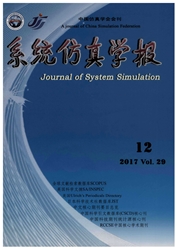

 中文摘要:
中文摘要:
在摄像机安装在一个自由移动的平台的环境里,如汽车,检测行人变得非常困难,特别是当行人所处的场景比较复杂时。针对这种应用环境,文中提出了一种coarse-to-fine的行人检测方法。本方法把一个人建模成人体自然部位的组装,所用部位包括头肩(head—shoulder),躯干(torso),腿(leg)。采用绝对值haar-like特征集和Edgelet特征集。在这些特征集上,我们用Soft Cascade训练各个部位检测器和全身检测器(full—body)。在本算法中,首先由full-body检测器产生行人侯选.然后,基于贝叶斯决策的组合算法进一步确定候选者中的行人。实验结果表明本算法有很好的检测性能,能在杂乱的自然场景中有效的检测行人。
 英文摘要:
英文摘要:
In environments where a camera is mounted on a freely moving platform, e.g. a vehicle, pedestrian detection becomes much more difficult. Especially, in cluttered scenes, the pedestrian detection is more challenging. A coarse-to-fine method for pedestrian detection was proposed in such environments. An individual human was modeled as an assembly of natural body parts, including head-shoulder, torso, and leg. Absolute Haar-like features and Edgelet features were introduced. Part detectors, based on these features, were learnt from training images by Soft Cascade. Firstly, the pedestrian candidates were generated by full-body detector. Then Bayesian decision base combination approach was utilized to determine pedestrians among those pedestrian candidates and could reduce the false alarm rate significantly. Experimental results show the method has high performance in natural cluttered scenes.
 同期刊论文项目
同期刊论文项目
 同项目期刊论文
同项目期刊论文
 期刊信息
期刊信息
